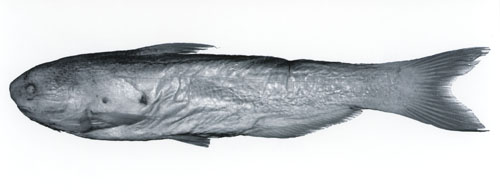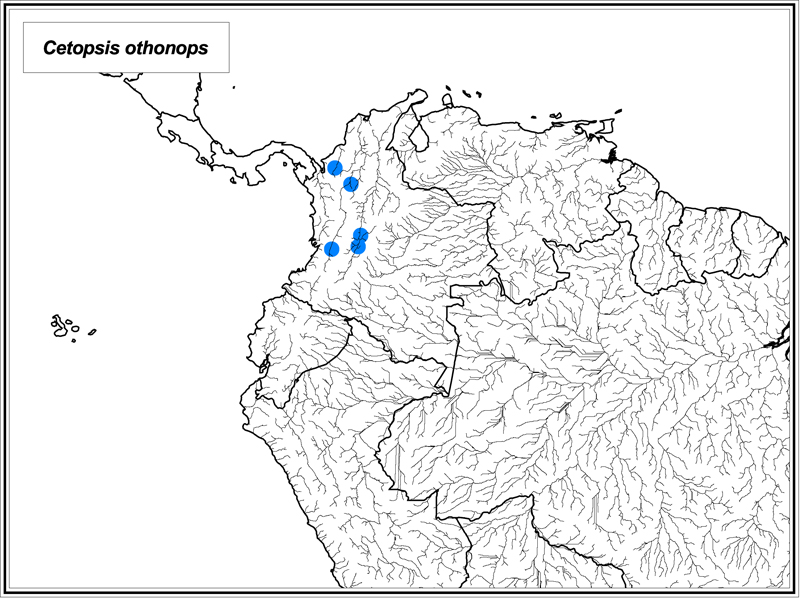
Reproduced from Vari, Ferraris and de Pinna (2005).
Cetopsis othonops (Eigenmann, 1912)
Identification: Cetopsis othonops can be distinguished from all of its congeners by the combination of the presence of an eye, the conical teeth on the vomer and the dentary, the rounded posterior nares which is distinctly separated from the contralateral nares by a distance greater than the width of the posterior nares, the moderately wide mouth approximately equal to the distance from the tip of the snout to the posterior margin of the orbit and much less that one-half of HL, the unpigmented anterior and lateral margins of the snout, the absence of a dark humeral spot, the absence of a posteriorly-rounded, variably-developed, bilobed patch of dark pigmentation at the base of the caudal fin, the absence of a pattern of dark pigmentation on the distal portions of the pectoral and anal fins, the limitation of dark pigmentation to the basal portions of the middle rays of the dorsal fin and the absence of dark pigmentation on the remainder the fin or along the length of the first dorsal-fin ray, the absence of dark pigmentation across all of the caudal fin other than for a thin stripe along the margin, and the possession of 45 to 48 total vertebrae, 23 to 28 total anal-fin rays, and 13 to 15 precaudal vertebrae. Maximum size: 110 mm SL.
Range: Cetopsis othonops is known from the Caribbean Sea versant Rio Magdalena and Rio Sinu basins of northwestern Colombia.
Information from Vari, R. P., C. J. Ferraris Jr. & M. C. C. de Pinna. 2005. The Neotropical whale catfishes (Siluriformes: Cetopsidae: Cetopsinae), a revisionary study. Neotropical Ichthyology 3:127-238.
